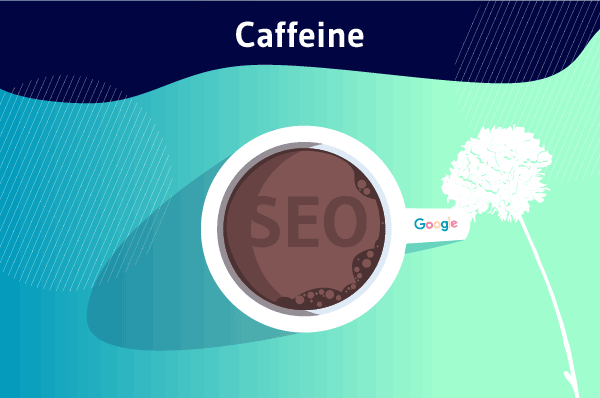Caffeine is a program launched by Google in 2010 to update its web indexing and crawling system to meet the needs and development of the web. It significantly expands Google’s ability to index multimedia content such as images, videos, etc.
Oh no! It’s not about coffee. Completely different from its homophone, Caffeine is a Google indexing tool that was intended to refresh the web. A change that was intended to be conducive and adapted to the needs and requirements of the web of the moment.
Among the various updates initiated by the search engine, the renewal of the Google index by the Caffeine project, clearly distinguishes itself from others. Having a correct knowledge of how Caffeine works is undoubtedly an asset to succeed in your SEO
To do so, let’s explore this particular Google reorganization together through the following questions:
- What exactly is it about?
- What does Caffeine look like?
- How does it work?
- What is the importance of such a program?
- What are the consequences of its introduction on the web?
So many pertinent questions that will be answered in the rest of this article.
Let’s go!
Chapter 1: What does Google’s Caffeine system actually mean?
In this chapter, I explain in detail what Caffeine is, why it was introduced and how it works.
1.1) How does Google search work in search in general?
Before tackling the actual functioning of Caffeine as an overhaul of the search engine’s indexing system, it is worth understanding the principle of Google search in general.
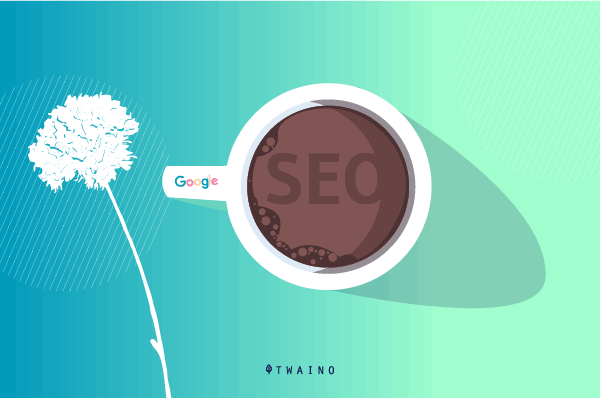
In order to understand this concept, it is important to have an idea of the framework in which it operates. This starts with an environment focused on exploration and indexing.
1.1.1. Exploration and indexing
Exploration and indexing are key concepts in Google search. Like a giant, ever-growing library, the web combines several hundred billion web pages that are catalogued, organized and categorized
An impressive task performed by Googlebots, which are responsible for listing, evaluating and arranging these web pages in the Google index
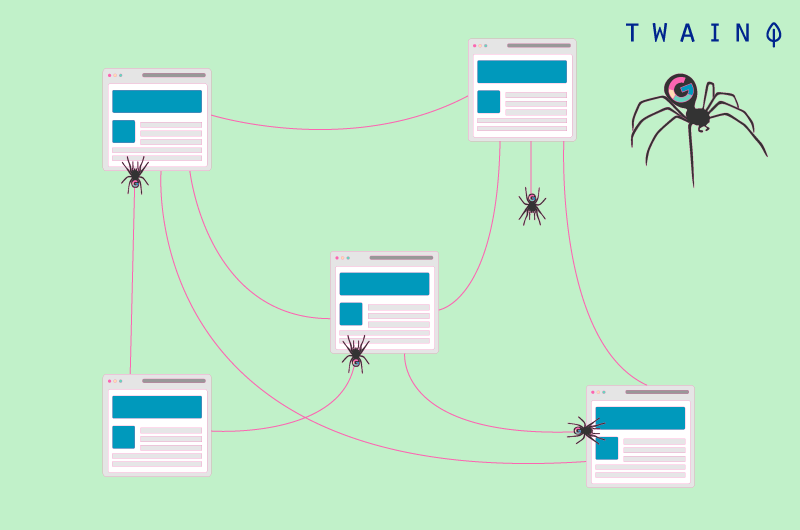
Crawling is a continuous operation in which Googlebots scan the web pages, analyze them, follow the links on them and send information about these pages back to Google’s servers
Once the web pages are discovered by the Googlebots, they are thoroughly examined and their contents (keywords, update level, etc.) are recorded in the Google index
This organization of information in the Google index represents theindexing.
1.1.2. The presentation of search results
After exploration and indexing, the web pages of the index must still be sorted in order to quickly propose useful and relevant results to the requests of the Internet users
This operation is performed by Google’s ranking systems at a given speed according to a model that evolves over the years. These systems are composed of several algorithms that take into account a number of factors

The main factors that lead to the results presented to the Internet users’ request are the following:
- The words contained in the query;
- The number of referring domains and backlinks of the pages concerned;
- The authority of these domains and links present on these pages;
- The size of the contents of these pages;
- Taking into account the context (search parameters, geographical location);
- And many other criteria.
1.2. caffeine: an exceptional update from Google
1.2.1. How it all began
The launch of Caffeine by Google was not random. The goal of this renovation was mainly to adapt to the constant and perpetual expansion of the web (the daily addition of thousands of websites) as well as to the diversity of the contents that were offered
In order to achieve this goal, Google’s technicians felt it was imperative to find a solution that would
- Keep the search engine up to date;
- Reduce as much as possible the time between the search and the presentation of the desired content.
It is in this context of improvement that the Caffeine system was born
First announced in 2009, the program was designed and tested several times
It was not really launched until June 2010, when it was immediately installed in all of the search engine’s datacenters, in all countries and for all languages
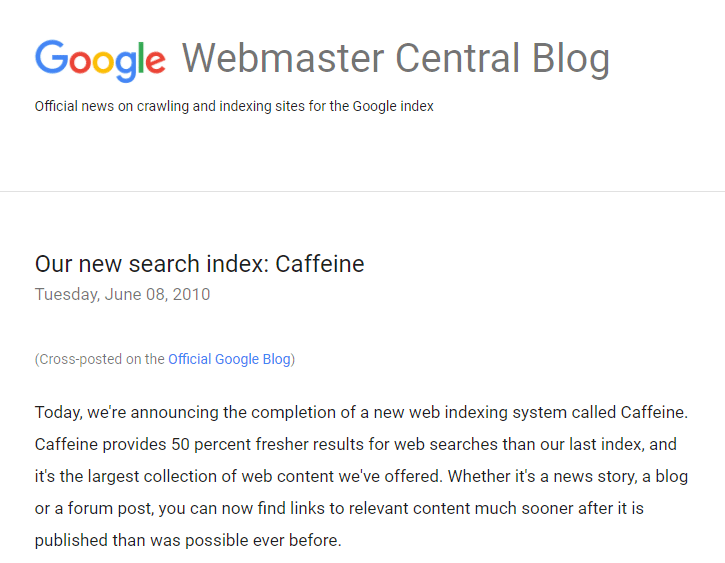
This new Google index is in fact a program that has come to renovate the old indexing and exploration system of the search engine
1.2.2. An explicit overview of Caffeine
The new structure brought by Caffeine combines a robustness and a speed without precedent in terms of exploration and indexing
And for good reason, Caffeine offered precisely 50% fresher results than the previous version of the Google index, with the largest collection of web content ever offered at the time (about 100 million GB on a datacenter).
A renewal that aimed toto be in perfect harmony with the evolution of the web at the time and to meet the requirements of the web with regard to the exhaustive integration of multimedia content, the flow of news in real time, etc.

Caffeine is ultimately an elaborate update that allowed Google to display content in its search results that had only been online for a short time
This is not a change in the search engine’s algo, but rather a special update of the algorithm, which is only interested in the exploration and indexing of web content.
1.3. The actual operation of Caffeine
Long before the implementation of the new Caffeine system, Google’s index processed web pages in groups based on a layer model. Within this model, layers were not updated at the same time (some faster than others)
In addition, web pages within a group were not accessible via search results until the group was fully checked
This partial and slow operation was responsible for the more or less long delays between the identification of a new page and its display in the search results.
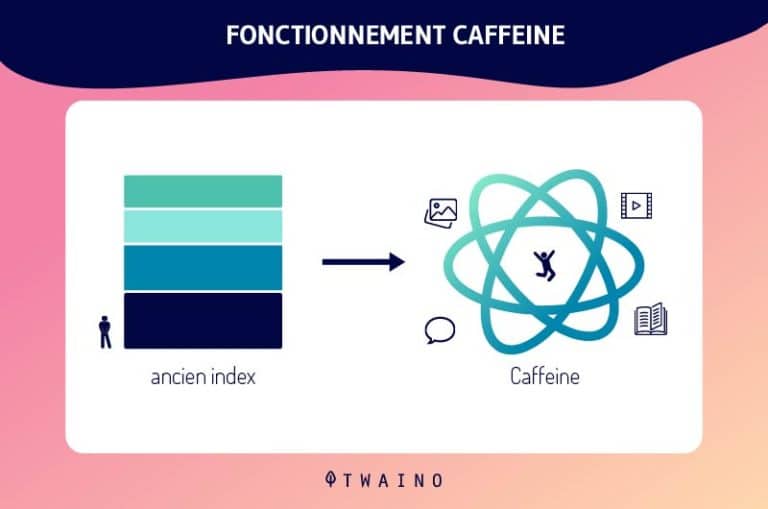
Compared to this old Google index, Caffeine uses a more elaborate, step-by-step and continuous crawling and indexing process
From now on, each page is individually processed, making it possible to integrate new elements without the use of layers. Thus, once analyzed and indexed, the page becomes almost instantly accessible via search.
An incredible feat for the search engine whose Caffeine renovation allowed for the very first time, the search of information almost in real time.
Chapter 2: The importance of Caffeine and its consequences on web actors
Here are some of the relevant effects that accompanied the introduction of Caffeine, especially for Internet users and SEO.
2.1. The importance of Google Caffeine for searchers
As you will surely have understood, the freshness of the results offered to Google searchers after the launch of the program has improved by 50%
A general refreshment that does not only concern static web content, but also applies to all other forms of content

A boon for users of the search engine for whom information becomes accessible in time, regardless of its form (videos, photos, podcasts, etc.)
They could now find new content much faster.
2.2. The impact of the Caffeine update on SEO?
The new Google index, because of the way it works, has really revitalized natural referencing. It is indeed a new start for SEO
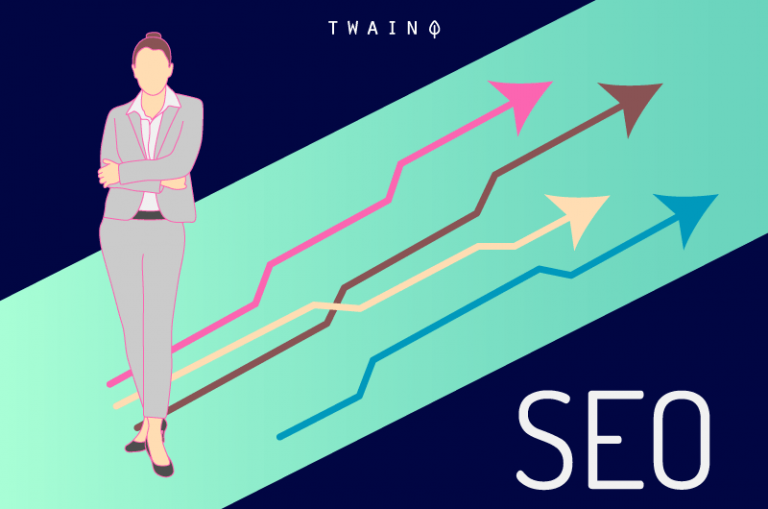
As we have seen previously, Caffeine is not a transformation of the Google algorithm itself
It has no direct effect on the SERPs (search engine result page) or the current ranking factors.
With the introduction of this new indexing system, it was not expected to see any changes in terms of ranking in the search engine results pages.
However, since Caffeine allows for a faster and more efficient indexing of data regardless of their various forms, the presentation of search results changes and with it the ranking of websites.
2.3. The impact of Caffeine on website operators
The upgrade of Caffeine had allowed
- The increase of the loading speed of the search results
- The increase of the database of the Google index;
- The proposal of relevant results and better adapted to users’ requests
Webmasters had now understood that thanks to this change, their contents could be explored and indexed by the Googlebot shortly after their publication.

However, it had become obvious that to keep one’s place or move up in the rankings, it was necessary to pay attention to the content of one’s website and to make sure that it did not become obsolete in front of the publication of more recent contents
It was therefore crucial to adopt the right SEO practices.
Chapter 3: Good SEO practices in front of Google’s Caffeine system
Faced with the many changes initiated by the launch of the new Google index, it was necessary to adapt as soon as possible. To do this, here are the three best SEO practices.
3.1. The regular contribution of content
This is a timeless practice that has been taught for a long time in SEO school and continues to prove itself

With the introduction of Google Caffeine, which emphasizes real-time search, it has become essential to think about a content creation and communication strategy that prioritizes its relevance as well as its regularity
Blog articles, videos, podcasts… published regularly are powerful pillars of SEO.
3.2. The maintenance of its presence on social networks
What better way to represent the concept of real-time information than social networks?
I am not teaching you anything when I say that social networks, whatever their type, are appreciated and adopted by the vast majority of Internet users. They are indeed the most dynamic and accessible vector of news
Google has quickly integrated them into these previous changes. With the arrival of this new program, Facebook, Tweeter and other social networks clearly occupy a place of choice in the search engine results

You can easily understand that in order to be well positioned in the search results, it had become essential to give priority to social networks
Moreover, it is essential to give priority to social networks, giving priority to social networks has several other advantages. By developing your presence on social networks, you ensure the following benefits:
- A considerable source of traffic for your website or blog;
- An improvement of your relationship with your customers;
- Effective, targeted and inexpensive advertising;
- Accessibility to certain resources and the possibility to partner with influencers;
- An opportunity to show your customers that you are close to them;
- And much more.
3.3. The accentuation of the competitive intelligence
When the indexing system is constantly updated, it means new search results
These new search results will take precedence over the older results which will often be at a disadvantage in the ranking
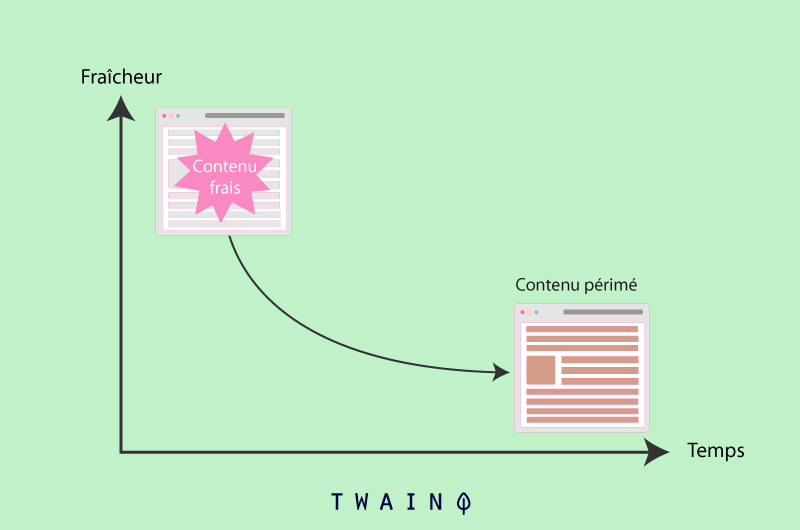
Monitoring the competition makes sense when you know that new competitors can easily appear in the SERPs.
With the priority given to new content, even new competitors are likely to have good rankings.
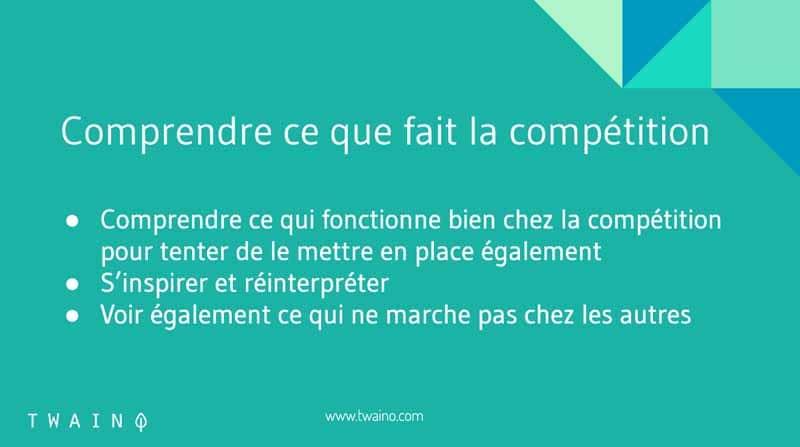
It is therefore essential to analyze and react promptly / effectively to the competition.
Chapter 4: FAQ
4.1. Who really benefits from the introduction of Google Caffeine?
This update of the Google index benefits all parties, especially : The internet users who will now be able to have fresh and relevant search results. Then the owners of new websites who will be able to see their latest content quickly indexed by this search engine.
4.2. What is the difference between the old index and the new index of Google?
Here is theexplanation of Google on the differences between the old index and the new index (Caffeine):
“Our old index was composed of several layers, some of which were updated faster than others. The main layer was updated about every two weeks. To update a layer in the old index, we crawl the entire Web, which means there is a significant delay between finding a page and delivering it to users. However, with the new Caffeine however, with the new “Caffeine” system, we will crawl the Web step-by-step and gradually update the search index on a global scale. In addition, when we detect new information on new or old pages, we can now add it directly to the index. This means that, since this update, researchers can now find the most recent information, regardless of when and where it was published.“
4.3. The speed at which Google displays search information has changed, but does it affect SEO?
At this level, two myths emerge with different points of view
For some, Caffeine has proven to be ” much stricter in terms of SEO “and ” relies more on keyword strings to produce better results “.
For others, like one author from SearchEngineLand.com who explains Google’s claim
“The introduction of Caffeine simply means that once these pages are crawled, they are made available to Internet users much faster.“
For now, we’ll have to wait and watch for the impact of Caffeine on page rankings and crawl rates
Whenever an adjustment is made, there are bound to be learning opportunities in the near future for Google’s SEO specialists.
In summary
The Caffeine indexing system of Google is a major adaptation of the search engine to the extraordinary evolution of the web
It is a cleverly developed tool that has improved the search engine’s index. It has breathed new life into the web and has brought rigor back to SEO as it is today.
If you have just finished reading this article, you now have all the information you need about how Caffeine works, its importance in SEO and the good practices it implies.
Here are the essentials to know about the new Google index. All you have to do now is to use this information wisely.
See you soon!

